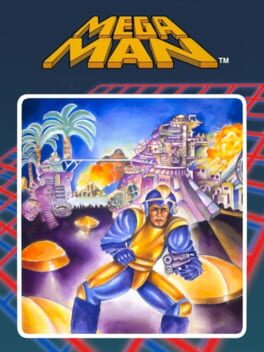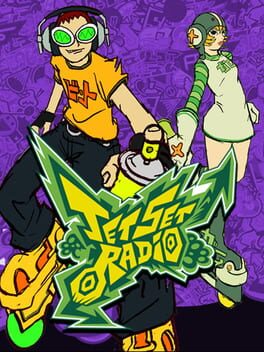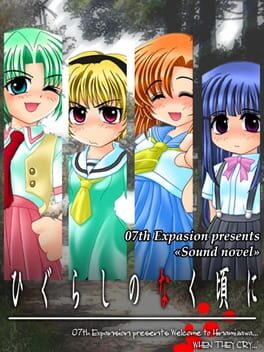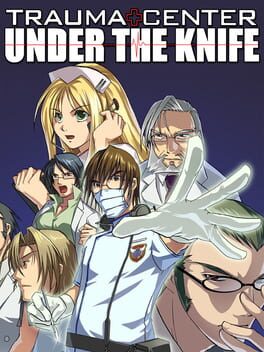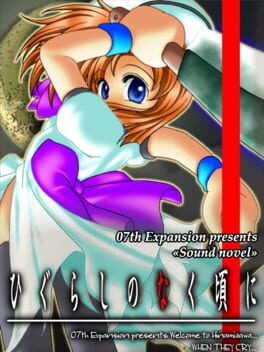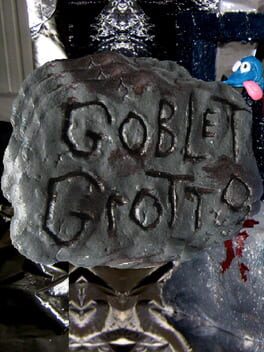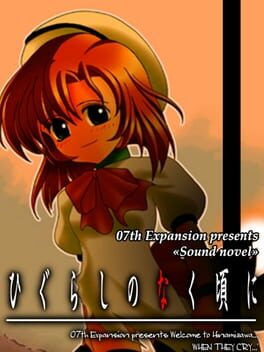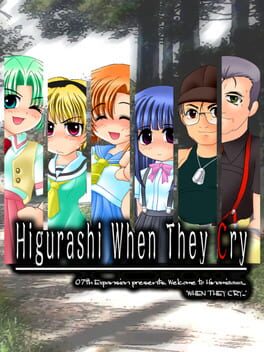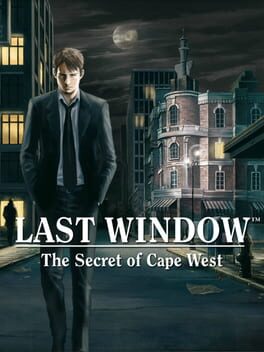PKD2
2007
Mediocre to downright awful in almost every way. The music and aesthetic is good, working together nicely to create a honestly awesome mid-2000s feel. Other than that, there really isn’t anything good here. The story is neither thematically nor narratively good, with incredible pacing issues. It feels like the actual story of the game is only 10 or so hours long, but is stretched far more than it needs to be so players can experience the repetitive and bare bones daily life over the course of a in-game year. The decision to have most major story events on full moons is thematically nice, but the weeks in between full moons are hollow and empty with little to do. The social links were alright, but even the best ones didn’t leave much of an impression on me. And finally, Tartarus is incredibly boring to play through completely, with the floors being essentially same the whole way throughout, and the combat is painfully dull and lacking in mechanics. Have not played The Answer but probably never will since I hear it’s somehow even worse than this game.
1987
One of the true misunderstood and underrated games of the NES library…the journey of Mega Man as he starts out as a simple boy, nothing more than a cleaning robot, to a warrior combating his corrupted brothers brings one to tears. I promise those tears are not from frustration of the incredibly bullshit platforming, enemies that either do a third of your health and/or cause you to fall into pits that instakill, or the almost cancerous bosses.
2012
2006
2012
The most unique and memorable dungeon crawler I’ve played in a good while. The game is one huge parody of 90s PC RPGs complete with random unexplained game mechanics, constant mentions of various written material you have to actively read outside of the game, dialogue with like every NPC and a surprising amount of lore and world building. The map design is chaotic and random and it’s incredibly easy to get lost, but with the amount of content in the game getting lost basically means finding another entirely different part of the game to explore. It’s advertised as having 600 hours of content on the creator’s website, and though that’s a obvious overstatement I wouldn’t be surprised if there were some random thing tucked away in one specific corner of one of the maps that actually has 600 hours of content. The game just feels that arbitrarily huge, and I still have ways to go to find everything despite getting one of the endings. The visuals are amazing as well. thecatamites’ games always look visually interesting and this one I especially love. The blend between 2D art and animations with 3D environments is something I experienced a lot in his newer games and it’s still just so good. Gameplay wise I can imagine a lot of people not liking this, but if you want gameplay thecatamites games are the last place to look anyway. Overall it’s fire, I need to go on a thecatamites marathon sometime.
This review contains spoilers
Time for a slightly more serious review of this chapter. This is the only chapter in Higurashi thus far where I’ve felt the need to write an actual review as this one specifically feels far more “complete” to me compared to the previous two. It has its own themes and messaging, things I failed to grasp in the previous chapters.
I believe this chapter is simply about the sheer powerlessness of humans. Not just individual people but entire communities and governments are completely powerless against certain problems, and the chapter goes about painting this idea by showing various crisis’ and what characters are able to do about them.
We first see this with Satoko’s abusive uncle, which is the crux of this chapter. We know that through the characters dialogue and reasoning that there is nothing they can do to help Satoko. They don’t have the authority or power to get her away from her uncle, and nothing anyone can think to do can provide a lasting solution. Keiichi resolves himself to kill Satoko’s uncle, but that does not save her. Regardless of whether Keiichi actually killed her uncle or not, which is something the chapter leaves ambiguous, Satoko’s abuse plainly continues. Despite supposedly getting rid of what caused the problem, it still manages to inflict pain on Satoko. So to put it simply, individuals have the “will” to solve the problem, but not the power. Then what about the government and other public institutions? They should have all the power in the world to solve a case like this. The problem is public institutions and the government might have the power but they don’t have the “will” until a problem is proven to exist without a reasonable doubt. With Satoko lying to public authorities and trying to hide the evidence of abuse, it is impossible for the government to gain the “will”. So despite having the power to help, without the “will” it is worthless. They are just as powerless as the individual under these conditions and completely unreliable.
We see another, much more extreme example with Hinamizawa’s destruction. This is very similar to Satoko’s abuse in that, even though there are signs of what is happening, both individual and government are too slow to act upon given warning signs and as a result a catastrophe occurs. It is noted that government action was particularly slow with them not detecting signs of a disaster on this scale until it was far too late. Should the government have been more vigilant and quicker, they would’ve been able to save a good portion of the village, if not more. But because of their lax nature they were unable to detect the problem or gain the “will”, and thus become powerless to prevent the destruction. It should also be noted that regardless of how fast they find out about the issue, the damage will still be done. A small amount of people will likely die and Hinamizawa will become inhospitable. No matter how fast the government response is, they can’t prevent all the damage.
This is again similar to the case with Satoko. With her being missing from school for three days and Rika refusing to tell what happened to her, there are already big warning signs. However because of assumption that everything is fine they discover the abuse too late. But let’s say they do discover the abuse day one and are immediately able to find everything out. How does this change things? Not by too much. Maybe they could’ve convinced Satoko to report her uncle, but the damage would still be done.
In both this case and the volcanic gas case, the “helpers” were too slow to realize problems were occurring and even if they realized it sooner irreparable damage would still be done. They are ultimately helpless and completely powerless, just like the people they’re attempting to help.
Don’t expect another review of this length or depth for any of the other chapters in Higurashi as ironically despite this chapter being the most difficult to figure out in terms of the mystery, it has been by far the easiest to understand thematically of the three chapters I’ve played.
I believe this chapter is simply about the sheer powerlessness of humans. Not just individual people but entire communities and governments are completely powerless against certain problems, and the chapter goes about painting this idea by showing various crisis’ and what characters are able to do about them.
We first see this with Satoko’s abusive uncle, which is the crux of this chapter. We know that through the characters dialogue and reasoning that there is nothing they can do to help Satoko. They don’t have the authority or power to get her away from her uncle, and nothing anyone can think to do can provide a lasting solution. Keiichi resolves himself to kill Satoko’s uncle, but that does not save her. Regardless of whether Keiichi actually killed her uncle or not, which is something the chapter leaves ambiguous, Satoko’s abuse plainly continues. Despite supposedly getting rid of what caused the problem, it still manages to inflict pain on Satoko. So to put it simply, individuals have the “will” to solve the problem, but not the power. Then what about the government and other public institutions? They should have all the power in the world to solve a case like this. The problem is public institutions and the government might have the power but they don’t have the “will” until a problem is proven to exist without a reasonable doubt. With Satoko lying to public authorities and trying to hide the evidence of abuse, it is impossible for the government to gain the “will”. So despite having the power to help, without the “will” it is worthless. They are just as powerless as the individual under these conditions and completely unreliable.
We see another, much more extreme example with Hinamizawa’s destruction. This is very similar to Satoko’s abuse in that, even though there are signs of what is happening, both individual and government are too slow to act upon given warning signs and as a result a catastrophe occurs. It is noted that government action was particularly slow with them not detecting signs of a disaster on this scale until it was far too late. Should the government have been more vigilant and quicker, they would’ve been able to save a good portion of the village, if not more. But because of their lax nature they were unable to detect the problem or gain the “will”, and thus become powerless to prevent the destruction. It should also be noted that regardless of how fast they find out about the issue, the damage will still be done. A small amount of people will likely die and Hinamizawa will become inhospitable. No matter how fast the government response is, they can’t prevent all the damage.
This is again similar to the case with Satoko. With her being missing from school for three days and Rika refusing to tell what happened to her, there are already big warning signs. However because of assumption that everything is fine they discover the abuse too late. But let’s say they do discover the abuse day one and are immediately able to find everything out. How does this change things? Not by too much. Maybe they could’ve convinced Satoko to report her uncle, but the damage would still be done.
In both this case and the volcanic gas case, the “helpers” were too slow to realize problems were occurring and even if they realized it sooner irreparable damage would still be done. They are ultimately helpless and completely powerless, just like the people they’re attempting to help.
Don’t expect another review of this length or depth for any of the other chapters in Higurashi as ironically despite this chapter being the most difficult to figure out in terms of the mystery, it has been by far the easiest to understand thematically of the three chapters I’ve played.
2023
Pretty well put together mystery. Each chapter gives slight clues to work with on slowly figuring out some parts of the mystery, but nothing is ever so huge or obvious you can make any deduction with absolutely certainty, and I think that’s the goal mysteries should strive for.
Additionally some of the narratives for the individual chapters are quite middling, with slow pacing particularly in the early to middle portions, but each Question Arc chapter is less about attempting to be their own complete narrative and rather fulfill a specific purpose in the mystery and the overarching narrative of all the chapters.
Also Hello! from the original soundtrack fucks so hard idk why they’d replace it in the steam release…
Additionally some of the narratives for the individual chapters are quite middling, with slow pacing particularly in the early to middle portions, but each Question Arc chapter is less about attempting to be their own complete narrative and rather fulfill a specific purpose in the mystery and the overarching narrative of all the chapters.
Also Hello! from the original soundtrack fucks so hard idk why they’d replace it in the steam release…
This review will be talking about both Hotel Dusk and Last Window as what makes them such great titles are shared between both of them.
These titles are some of the most grounded and personal works I have ever had the pleasure of going through. By personal, I do not mean something that relates to me specifically, but rather that the ideas and stories of these titles are something applicable to all of our real lives.
In both games there is this mystery that has plagued Kyle Hyde for several years, or even most of his life. Hotel Dusk and Last Window take place late in December of the years 1979 and 1980, respectively and there’s this very unique sense of urgency to solve these cases before the new year begins. At the end of every year, we look back on it, at all of it’s victories and failures, then we hope for a better future, and there’s also a sense to wrap everything from the the year up. These games manifest that sense of urgency into reality. In Hotel Dusk, everyone related to the case you’re investigating is in the same area but wait just one day and at least one will certainly leave and the puzzle will be left unfinished forever. In Last Window, the location of the case you’re investigating this time is going to be demolished in just two weeks, so you must solve the mystery before then and of course before the new year begins.
This very human concept of moving on from the past and the games general realistic setting is backed up by it’s lovable cast. Most of the characters relate to these themes, having these mysteries that have plagued them with expiry dates on the solution, and as you solve the mysteries of these side characters you slowly solve bits and parts of your own. Adding to the realistic feel of the games is the dialogue and character art. The dialogue and writing flows extremely well and naturally, it really does feel like these characters are actual people and the brilliant animations and movements done through rotoscoping makes these characters feel alive all the more.
The music is another aspect adding to this with less technological instruments and rather much more tangible ones befitting of games taking place in the late 70s and early 80s such as saxophones, pianos, drums, and the like.
All in all thoroughly enjoyable titles, I probably could’ve written a better review but it’s 12:30 am, I’m tired, but I also wanted to get my love for these games out there and did not want to wait until the morning!!
obligatory RIP Cing
These titles are some of the most grounded and personal works I have ever had the pleasure of going through. By personal, I do not mean something that relates to me specifically, but rather that the ideas and stories of these titles are something applicable to all of our real lives.
In both games there is this mystery that has plagued Kyle Hyde for several years, or even most of his life. Hotel Dusk and Last Window take place late in December of the years 1979 and 1980, respectively and there’s this very unique sense of urgency to solve these cases before the new year begins. At the end of every year, we look back on it, at all of it’s victories and failures, then we hope for a better future, and there’s also a sense to wrap everything from the the year up. These games manifest that sense of urgency into reality. In Hotel Dusk, everyone related to the case you’re investigating is in the same area but wait just one day and at least one will certainly leave and the puzzle will be left unfinished forever. In Last Window, the location of the case you’re investigating this time is going to be demolished in just two weeks, so you must solve the mystery before then and of course before the new year begins.
This very human concept of moving on from the past and the games general realistic setting is backed up by it’s lovable cast. Most of the characters relate to these themes, having these mysteries that have plagued them with expiry dates on the solution, and as you solve the mysteries of these side characters you slowly solve bits and parts of your own. Adding to the realistic feel of the games is the dialogue and character art. The dialogue and writing flows extremely well and naturally, it really does feel like these characters are actual people and the brilliant animations and movements done through rotoscoping makes these characters feel alive all the more.
The music is another aspect adding to this with less technological instruments and rather much more tangible ones befitting of games taking place in the late 70s and early 80s such as saxophones, pianos, drums, and the like.
All in all thoroughly enjoyable titles, I probably could’ve written a better review but it’s 12:30 am, I’m tired, but I also wanted to get my love for these games out there and did not want to wait until the morning!!
obligatory RIP Cing

